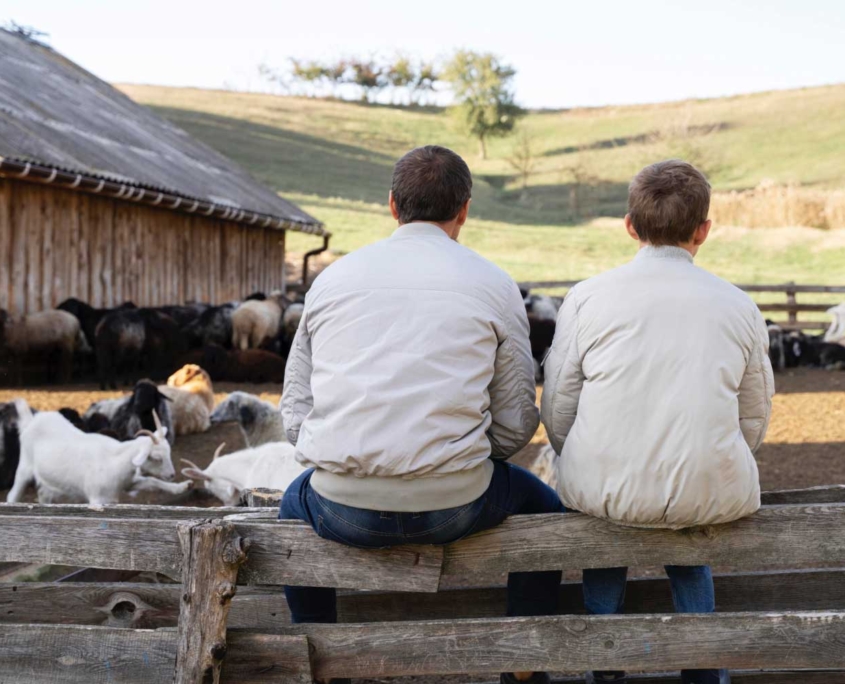Farm succession isn’t just about passing on land or assets—it’s about ensuring your farm remains resilient, productive, and future-focused. As a farmer, you’ve spent years cultivating not only crops and livestock but also the unique wisdom, routines, and systems that make your farm thrive. Transitioning this wealth of knowledge is just as crucial as transferring ownership.
At Enable Ag, we specialise in succession planning of wisdom—capturing and systemising farm operations to reduce reliance on any one person. By focusing on knowledge transfer, streamlined processes, and team empowerment, you can safeguard your farm’s legacy for the next generation.
Why Succession Planning of Wisdom Matters
Traditional succession planning often centres on financial and legal arrangements, but what about the intangible assets—the know-how, strategies, and systems that make your farm unique? Without capturing this wisdom:
- Critical knowledge could be lost.
- Successors may struggle with decision-making.
- Operations risk disruption during unexpected changes.
By focusing on systemisation and knowledge transfer, you equip your successors to lead with confidence and continuity.
Four (4) Key Pillars of a Successful Farm Succession
1. Plan Early and Communicate Often
Farm succession isn’t a task to leave until retirement. It’s a long-term process that requires careful planning and open communication. Early discussions about the farm’s future create opportunities to align goals, define roles, and address concerns before they become roadblocks. These conversations should include everyone involved in the farm’s future—whether family members or key staff.
Clear and regular communication is equally important during the transition. It helps set expectations, resolve misunderstandings, and ensure everyone understands their responsibilities. Consistent check-ins and stakeholder meetings are vital to keeping the transition on track.
Use discussions as a starting point to document the shared vision for your farm and the steps required to achieve it. This clarity will guide the entire succession process.
2. Capture Knowledge and Build Systems
The heart of farm succession lies in transferring operational wisdom. Without proper documentation, years of experience, seasonal routines, and critical workflows risk being lost. Succession planning should involve systematically capturing this knowledge and building systems to ensure your farm’s sustainability.
This includes documenting:
- Seasonal calendars detailing key workflows and timings.
- Best practices and standard operating procedures for each enterprise.
- Specific “do’s and don’ts” based on lessons learned.
- Decision-making frameworks and troubleshooting guides.
Systems reduce dependency on any one person and make it easier for successors to understand and maintain daily operations. Leveraging technology—like digital systems—can streamline this process, enabling better organisation and accessibility of information.
Create a centralised knowledge repository where all farm documentation is stored, from operational guides to equipment maintenance records.

3. Delegate Responsibilities Strategically
Delegating isn’t just about handing over tasks—it’s about empowering successors with the skills and confidence to lead. A phased transition ensures successors have time to learn and adjust while still benefiting from your mentorship. Begin with smaller, well-defined tasks and gradually transfer more complex responsibilities.
It’s also important to foster a team-oriented culture. A resilient farm doesn’t rely on a single individual but rather a team capable of stepping into various roles as needed. Upskilling your team and assigning cross-functional tasks ensures everyone can contribute meaningfully to the farm’s success.
Pair task delegation with leadership development. Encourage successors to participate in decision-making processes, attend industry events, and take on projects that develop their problem-solving skills.
4. Prioritise Sustainability and Personal Freedom
Farm succession isn’t just about what’s best for the farm—it’s also about your personal future. Transitioning to retirement doesn’t have to mean a sudden break from farm life. A phased approach allows you to step back gradually while staying connected in an advisory capacity.
At the same time, it’s critical to ensure the farm is prepared for the long term. This involves creating a robust financial and operational plan that safeguards profitability, addresses risk, and supports the next generation.
A sustainable succession plan also focuses on team empowerment and long-term viability. By reducing key person dependency and building a solid operational foundation, you’re setting your farm up for continued success—while giving yourself the freedom to enjoy well-deserved personal time.
Define what personal success looks like post-transition, whether it’s travel, hobbies, or family time, then align your succession strategy with these goals to create a smooth and fulfilling retirement.
Checklist: Actionable Steps for Succession Success
- Start Planning Early
- Schedule a family or team meeting to discuss long-term goals and roles.
- Develop a shared vision for the farm’s future.
- Hold consistent check-ins and stakeholder meetings to maintain alignment and address concerns.
- Document Knowledge and Systemise Operations
- Create a farm calendar and record seasonal workflows for key activities.
- Centralise all documentation in a digital or physical repository for easy access.
- Leverage technology and develop Standard Operating Procedures (SOPs) for each task or enterprise. Example: Use Smartsheet to create and manage SOP templates. Use Loom to record video tutorials that demonstrate tasks step-by-step.
- Identify and address bottlenecks in current workflows to improve efficiency.
- Delegate Tasks Gradually and Empower Your Team
- Begin with smaller, low-risk tasks and gradually progress to leadership responsibilities.
- Provide mentoring and constructive feedback to help successors build confidence and grow into their roles.
- Conduct training sessions to equip your team with versatile skill sets.
- Assign cross-functional tasks to reduce reliance on specific individuals and foster a resilient team culture.
- Focus on Personal Transition
- Set a phased timeline for reducing your daily involvement, ensuring a smooth handover of responsibilities.
- Plan personal goals and activities to enjoy during your retirement years, aligning your transition with your aspirations.
Download the Farm Succession Checklist here.
Your farm’s legacy is more than land—it’s the wisdom and systems that make it thrive. Let Enable Ag help you capture and systemise that knowledge to ensure a seamless transition for generations to come. Contact us today to start planning your farm’s future with confidence.
If you found this article helpful, share it with your network to help others unlock their farming potential. Don’t forget to like and follow us on social media for more insightful tips: Facebook, Instagram, and LinkedIn. Let’s empower more farmers together!

 Enable Ag
Enable Ag